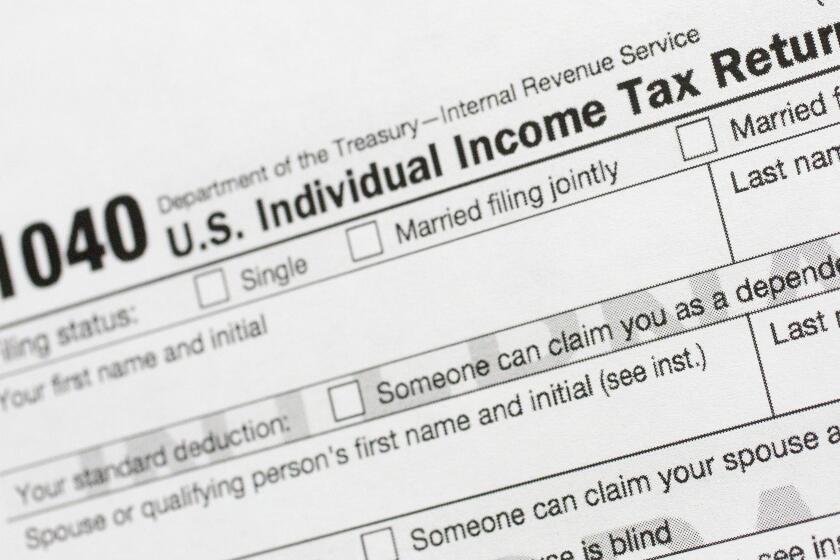Southland firms positioned to ride security wave
Well before the botched Christmas Day bombing attempt aboard a Detroit-bound plane, a Torrance security company was moving to the front lines in the campaign to deploy advanced technology to thwart terrorist attacks.
FOR THE RECORD:
3-D airport scanners: A photo caption that accompanied an article on airport security systems in Thursday’s Business section misspelled Schiphol Airport in Amsterdam as Schilphol. —
Rapiscan Systems won a $25-million order from the Transportation Security Administration in October to build 150 full-body imaging systems and expects to bid on a planned TSA contract for 300 more machines.
Some security experts believe the scanning devices could have detected the explosives that a Nigerian national allegedly strapped to his body and tried to detonate on a Northwest Airlines flight from Amsterdam to Detroit.
Rapiscan, a subsidiary of OSI Systems Inc. of Hawthorne, is one of several Southern California technology companies born after the dramatic downsizing of the area’s aerospace industry over the last two decades. Those small companies mainly develop advanced systems that law enforcement and airline security agencies say are needed to ferret out weapons, explosives and other devices that may be used by terrorists.
Rapiscan stands a good chance of winning more TSA contracts because it is one of only two companies -- along with the much larger LC Communications Holdings Inc. of New York -- with the background and government clearance to compete for big projects.
And industry analysts expect plenty of work ahead in the security field.
“In light of what has happened on Christmas Day, I expect that the TSA will accelerate the deployment of these scanners,” said Josephine Millward, an analyst with investment banking firm Dougherty & Co. in Minneapolis.
The incident prompted the federal agency to order 300 more full-body imaging systems to scan airline passengers.
For a company like Rapiscan, winning a contract would mean big revenues, said Michael Kim, an analyst for Imperial Capital in Los Angeles. Full-body scanners for every airline gate in the country would generate up to $300 million in revenue, he said.
Rapiscan’s machine -- the Secure 1000 Single Pose -- uses what is known as backscatter technology. As the name indicates, the device “scatters” low-level X-rays over a passenger, who is positioned in a confined chamber, and collects the echoes to create what looks like a two-sided nude image, revealing any items hidden under the clothes.
The company expects to deliver the first 50 units from its October contract next week, said Peter Kant, Rapiscan’s vice president for global government affairs.
The company has worked with the TSA in the past, developing more than 380 X-ray machines to scan bags and parcels in about 30 airports nationwide. This month it won a $3.2-million contract to develop screening devices for baggage and parcels at the 2010 Winter Olympics in Vancouver.
Though Rapiscan’s headquarters are in a 88,000-square-foot facility in Torrance, its airport screening devices will be built in the firm’s manufacturing center in Ocean Springs, Miss. The company employs about 750 workers worldwide. Its president is Ajay Mehra.
Terrorist attacks and the potential for more violence have catapulted the stock prices of technology security firms. L3 Communications’ shares have gained 20% this year, rising $1.32 on Wednesday to $88.50. OSI’s stock has nearly doubled, gaining $2.40 on Wednesday to $27.46.
Though sales for the third quarter were off nearly 10% compared with a year earlier, OSI founder and Chairman Deepak Chopra said Rapiscan was “well-positioned” for “significant growth” next year, in part because of the $25-million order from the TSA.
The TSA plans to use Rapiscan’s 150 full-body imaging devices early next year as a primary screening device for all passengers, TSA spokeswoman Suzanne Trevino said. Passengers who decline to be subjected to the full-body scan must undergo a pat-down search.
The agency will deploy the machines at airports it believes face the highest potential risk for attacks, but it won’t yet identify those locations.
Meantime, L3 has 40 of its ProVision body-imaging units at 19 airports across the country. Using radio waves rather than X-rays to create a 3-D image, the units are secondary screening devices, employed only after a passenger triggers a metal detector or raises suspicions among security officials.
The company also has deployed more than 200 body-scanning devices around the world, including scanners used by the U.S. military in Baghdad’s heavily guarded “Green Zone.”
L3, which employs about 66,000 workers across the country, also expects to compete for the planned TSA contract, a company spokeswoman said.
Other high-tech Southern California firms also should be able to take advantage of the growing demand for security devices. Several of the security firms have been launched in the last few years by scientists and engineers trained at NASA’s Jet Propulsion Laboratory in La Cañada Flintridge and Caltech in Pasadena.
“We have a treasure trove of technology here because a lot of the engineers came out of the aerospace industries,” said Stan Tomsic, administrator for the Business Technology Center, a business incubator funded by Los Angeles County.
Among them are StereoVision Imaging, an Altadena company that has won federal funding to develop facial-recognition technology that can identify a person from more than 100 yards away, he said.
Technology developed by JPL to detect abnormal levels of spores in spacecraft is being used by Universal Detection Technology of Beverly Hills to develop a device that can detect bioterrorism threats such as traces of anthrax and ricin.
“It’s not just a concept,” Tomsic said. “They are actually doing this.”
More to Read
Inside the business of entertainment
The Wide Shot brings you news, analysis and insights on everything from streaming wars to production — and what it all means for the future.
You may occasionally receive promotional content from the Los Angeles Times.










